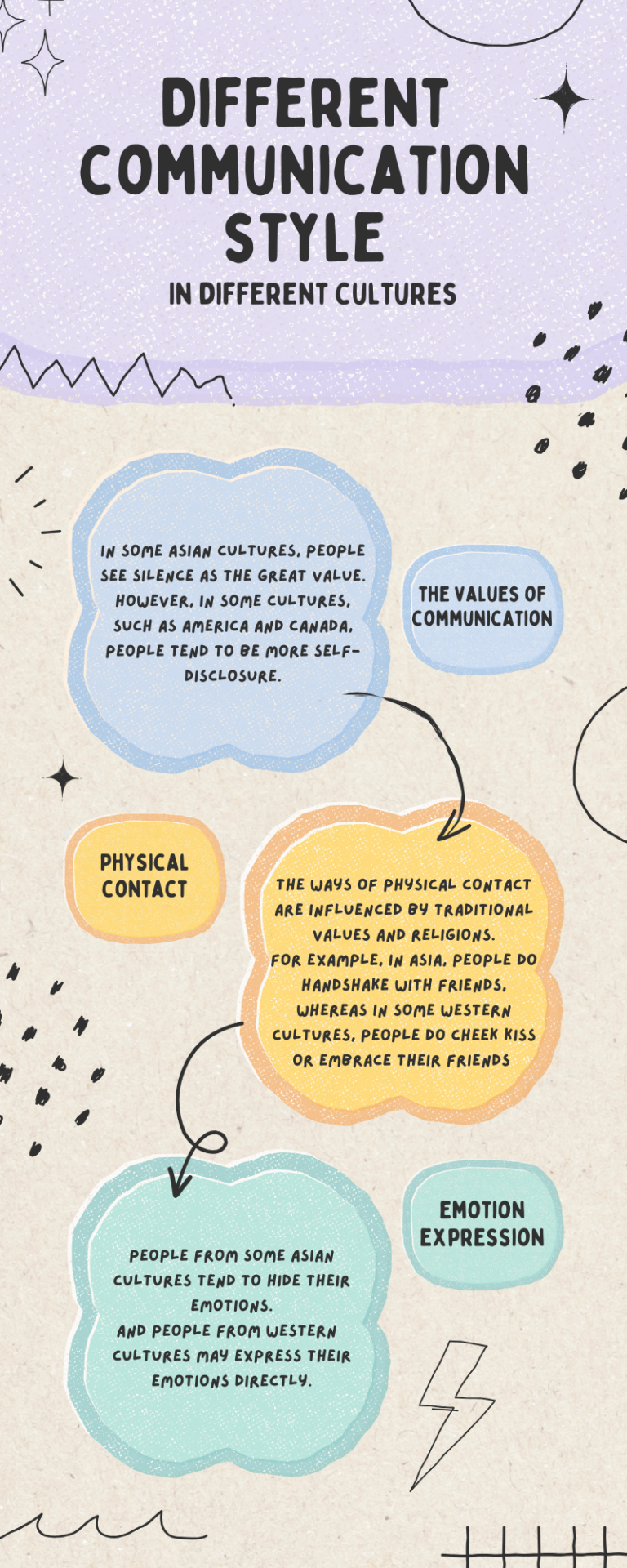Where are you coming from? – Culturally Different Communication
At TRU, Students come from around the world, and it’s easy to find someone who shares the same communication style as you on campus. However, with thousands of students, we also interact with many different cultures! Finding the balance and learning how to communicate in diverse settings becomes not only a part of our everyday life, but also a part of what makes our education unique. But before you go looking for similarities, it’s important to understand where these differences come from, so you can respect other’s different communication styles.

Having students from over 100 countries is a great opportunity to know more about each other in many ways. This time will focus on the communication style differences.
The Values of Communication
Every culture has rules that require speakers to behave appropriately we learn socially as children. In many Asian cultures, for example, silence is valued socially. It’s widely considered that humble people keep silent whereas talkative people can be seen as show-offs. Emotions and thoughts are generally processed internally which is why communication can be indirect and subtle with a focus on the value of relationship harmony. However, North Americans think self-disclosure, personal achievement, and autonomy are important, which explains why straightforwardness is valued in their culture.
This is rooted in the cultural difference between individualistic culture and collectivistic culture. Countries such as the United States, United Kingdom, and Canada have individualistic cultures, where there is a prioritization or emphasis on the individual over the entire group. Whereas places like Latin America, and Asia have collectivistic culture where Kinship, family, and community are extremely important, focusing more on the importance of the group a community over the individual.
Physical Contact
The nuances in the interpretation of physical contact could range from being a big deal to not mattering at all depending on the culture. Some are because of religion, and some are because of traditional values. Even for those greetings between friends, people from South America would likely kiss each other’s cheek, and when people from North America meet their friends embrace and say hello at the same time. However, people in Asia just wave or shake their hands with their friends.
These vast differences make you realize just how important it is to talk about people’s boundaries and maybe ask your friends how they see these elements within your communication!
Emotional Expression
Emotional expression is a huge part of communication since much of how we communicate is non-verbal! Even though students at TRU can experience the same emotions (like the stress of finals) and have similar thoughts (like hating finals), the ways they communicate these feelings with people are quite different. These emotional expressions are influenced by our values and the culture that we come from. It’s easy to see this in play within a group project. People from those collectivistic cultures would not show their true emotional expression easily, tending to adjust any bad emotions that may upset others. Those raised in individualistic cultures might bring up issues in a more direct manner, explaining how someone’s actions may have impacted them.
In many ways, this creates an awesome opportunity that we wouldn’t have otherwise to share communication skills and navigate different problems together!
We all have our own style!
It’s important to note that while we’ve discussed some general differences between cultures, no culture is a monolith. Everyone’s communication is shaped by the carried and unique experiences they have throughout their lives, but it’s important to understand the differences that culture can have in communication styles. When we understand these differences we can navigate our communication with more compassion and understanding, helping us to experience better personal relationships on campus and in our lives.







